Hallucinations, a blog about writing, trains, and Wire to Wire
Fourteen Years and Rolling
Fourteen years ago – on February 11, 1998 – I launched the Seger File. I didn’t know it at the time, but it was the beginning of one of the most fulfilling things I’ve ever done, all because of the people I’ve met and the friends I’ve made.
A few Seger File facts:
- When I started, the site had very few graphics or images. I figured the information superhighway, as we called it back then, was all about information, not pictures. Also, my computer was way too slow to handle images well.
- The site was launched on a dial-up Internet service – almost everything was dial-up back then. I built the site in Claris Home Page, doing most of the coding in the cafeteria of Sparrow Hospital in Lansing, Michigan. My mom was in the hospital recovering from a stroke, and I could only see her a few times a day for short periods. In between visits, I’d go back to the cafeteria and do more coding.
- The site still runs on Claris Home Page, which only works on Mac OS 9. I keep an old laptop around to host the site. I do all the updates on a MacBook Air, then transfer them to the old laptop to upload.
- On the day after I launched the site, there were four visitors. There was no Google at the time and so no Google analytics. I’ve had several different visit-counter/analytic programs over the years, some of which are no longer functional, so I don’t really know how many people have visited the site in all. In the past five years, there have been 200,000 unique visitors.
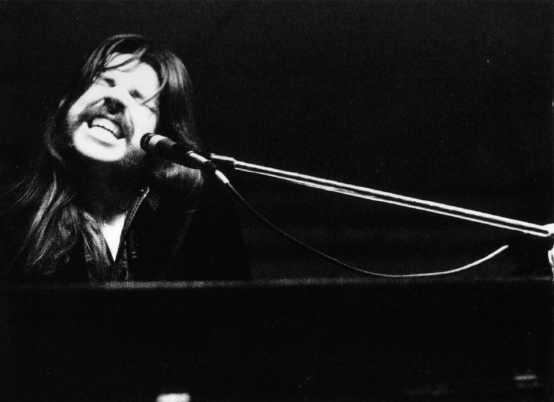
A photo I took at the Primo Showbar in Ann Arbor in 1973. I gave it to Seger at the next show. He used it on the back of his next album.
- I started the site because I was having trouble finishing my novel, Wire to Wire. I thought doing the site would provide a good little break, and then I’d go back to writing my book. In fact, the site was so much fun to work on, it probably slowed the novel down by five years or more. (Shameless pitch: Don’t worry about buying the site a birthday present. But feel free to buy yourself a "smart, thrilling and darkly funny" book that's not really a crime novel, set in Michigan.)
- I was tremendously fortunate to have started a site about Seger at a time when he had pretty much dropped out of sight. That meant that instead of reporting news, I had to create essays. Without a lot of information to rely on, I had to give the site a personality. It made me a better writer.
- Want to know what’s up with Seger these days? Do a Twitter search or set a Google alert. If you wanted to know what was up with Seger in 1998, there weren’t many places to go. I’d hit the library, look through the microfiche and the out-of-town newspapers. If I found something, I’d make a photocopy, come home and re-enter the information. There were no other Seger sites back then, so for years the Seger File was the only online resource.
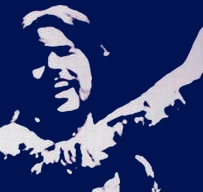
- In 14 years, I can only remember four times when people have asked me to take things down from the site. One was a bad review of a video, a couple were photos, and one was when I posted some lyrics Seger hadn’t released yet.
- There was more sarcasm and humor in my writing during the early years. When Seger got inducted into the Hall of Fame and the Detroit Free Press called me for an interview, I realized a lot of people were reading the site, and I became a little less gonzo and a little more journalistic. When the BBC called for an interview, I knew the site was making an impact. And there’s still plenty of sarcasm on the annual April Fools post.
- You might imagine that over the years, a person running the Internet’s largest Seger site would hear a lot of rumors and information that can't be posted. You’d be right.
- I initially named the site “The Segerfile.” Then I realized search engines weren’t listing it when people searched for “Seger.” So now I usually write “The Seger File.” But I still like Segerfile better.
And the best thing about the site, by far – all of you. Thanks for all your encouragement and friendship over the years. As Seger says in one of my favorite lines, no one has to tell me I’m a lucky man, and it’s your friendship that makes me feel that way.
________________
Bob Seger, the Tigers, America the Beautiful. For a lot of us, the second half started right here.
Posted in Music
Land of Dreams
A long time ago, I set off by freight to see Northern Michigan and most of the western states, traveling with my good friend Jesse Burkhardt, and sometimes Tom Lacinski, and sometimes alone. This year, all of that traveling came full circle with the publication of Wire to Wire.
There are many, many people who helped along the way—way too many to name. I'm grateful to all and especially to all of you who have invited the world of Wire to Wire into your imagination and let it bloom there. Thanks, and here's to many good trips ahead.
— Scott
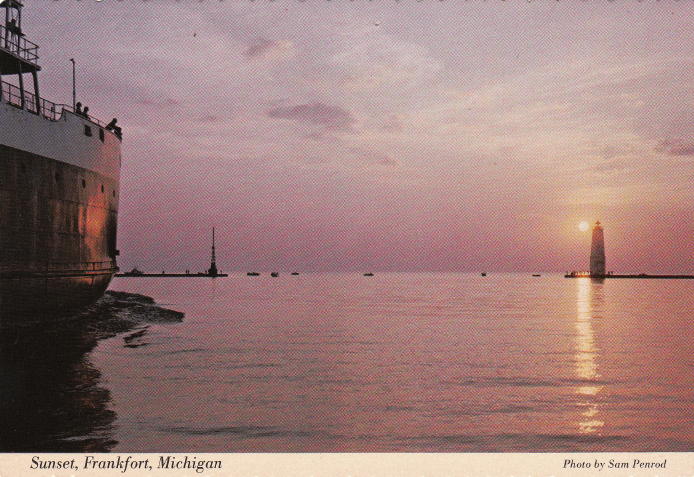
Wild In Minneapolis
One day in Minneapolis, when I didn’t have anything else to do, I leapt from an overpass onto the top of a moving train. It was one of a few reckless things I used to do that didn’t seem reckless at the time—the time being 1978 or so.
At night, for example, I used to walk out on the railroad bridge that crossed the Mississippi between Minneapolis and St. Paul. It was a long bridge, with two tracks and a raised metal ledge running the length of the span. The ledge was about as wide as a sidewalk and some nights I would stand on it and look at the blackness far below where I knew the river was. I never gave a thought to jumping—it wasn’t about that. Just the opposite: I went out there to feel alive. And also, to be honest, because I didn’t have many friends or a lot of other places to go.
This past October, I went back to Minneapolis to read at Magers & Quinn, a great indie bookstore on Hennepin Avenue, a few blocks from where I lived in the ‘70s. (Another wonderful bookstore in Minneapolis, btw, is Birchbark Books near Lake of the Isles. Birchbark is owned by Louise Erdrich and run by a very friendly, book-loving staff.)
Magers & Quinn had invited me to read with Matt Burgess, author of Dogfight, A Love Story. Matt’s a great guy and his book is amazing—get your hands on it and prepare to inhale.
When the reading was over, Andy at M&Q told me about a place in town called the Hard Times Café. It was a vegan, cooperative café, he said, and also a gathering spot for people who still rode freight trains. The Hard Times happened to be across the way from a place that made prosthetic limbs, and Andy told me that you'd sometimes you’d see riders in the café wearing them. I knew I had to check the place out.
But first—around midnight, actually—I went back to the railroad bridge, intending to walk out over the Mississippi. To feel alive, of course, but also with the hope that the bridge might now extend backward into time. To the days when I used to sleep on the floor of the Minnesota Tenants Union, where I sometimes worked—back when $300 would get me through a whole summer of riding trains, with a little fruit-picking thrown in to tide me over. And back to the friends who took me in or let me go, like Cara and Patti and Kink, and Richard who let me ride in the caboose all the way to Mankato, and Flo, Kirk, Diana—hey, I guess I did have friends back then after all.
Before I could get to the bridge there was a fence that had to be jumped, and that much I still have in me. But past it, at the edge of the river, there was a second, much bigger fence, with barbed wire extensions. You used to walk out on this bridge, the fence said, but you aren’t walking out no more.
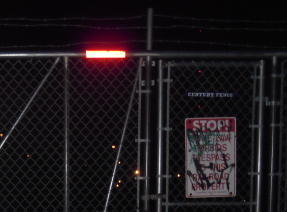
This second fence was a serious piece of work. I spent a long time trying, but the portal to the past remained closed. Afterward I spent an hour or so trying, more successfully, to open a portal at Palmer’s Bar in the Cedar-Riverside neighborhood.
So it was that I ended up at the Hard Times Café after 2 a.m. on a Thursday night in October. The place was still open—til 4:00 a.m. said the girl behind the counter, who had eyes so much like cats-eye marbles I never wanted to look away.
There were no freight riders around that I could see, but everyone in the place had a glow of some kind; a strange middle-of-the-night energy of people who were vegans, or students, or involved in romances that were ending or beginning or fouled up in ways that kept them from going home. I didn’t know. But I knew I wanted to be there just to bask in whatever it was.
I also wanted to abandon/release a copy of Wire to Wire there. So I left behind WILD W2W-003, one of four copies that are running around loose in the world. There’s a message from me on the inside, asking those who find the book to get in touch if they like.
.jpg)
In November, I got this message:
SCOTT: I am currently reading one of the "wild" copies of your novel Wire to Wire, which I found in the free bin of the Hard Times Cafe in Minneapolis where I work. I like it so far; your writing reminds me a little of Brett Easton Ellis or maybe a less snarky Chuck Palahniuk. I'm glad I decided to give it a go, man....will probably just return it to the free bin when I'm done or give it to someone else. Cheers-DOUG SARETSKY
I wrote Doug back, telling him what I’d heard about Hard Times being a mecca for people hopping freights—which didn’t really mesh with what I’d seen in late October. He replied:
“Man, Hard Times is trainhopper central in the spring and summer—some of ‘em are kind of cool and some of ‘em are just drunk kids.”
I should have known that, of course. Spring is when I used to quit whatever job I had so I could go back out on the road. So it looks like I’ll have to return to the Twin Cities next year. I want to meet these kids who are still riding the rails.
In the meantime, the other three wild copies of W2W are still out there. If you come across one, let me know.
______________________
.jpg)
A bridge to the past. "Because some things in life are still worth a good brawl." Jesse Sykes and the Sweet Hereafter, "Tell the Boys."
The story of how I jumped from the overpass onto a moving freight is here.
Five Reasons
Can you withstand all ten reasons to buy Wire to Wire? Test your willpower. I’ll add a new reason every day until you head down to the freight yard or fall in love with a woman who sniffs glue. But it would be easier (and more enjoyable) if you just bought the book.
Reason #1: Rose.
Part-time dispatcher for the county sheriff, a gay woman in a small town, able to see through all bullshit. Calls Slater and Harp “the two penises.” Verbally, she’s the only character who is a match for Charlie. Rose sometimes criticizes Lane, but it's because she loves her.
“And then there’s Lane,” Rose said. “She’s a sexual dyslexic. First the fucking, then the flirting. But that’s why we love her, right? She drinks straight from the blender.”
Rose is also the only character with a halfway decent handle on love and sex. “Just remember,” she tells Slater. “If you can’t hear the angels sing when you make love, you’re not doing it right.”
Bonus reason: W2W is the only book published this year containing a two-word sentence consisting of the same word twice, used first as a noun, then as a verb. Page 194. Thank you, Tin House, for not editing that out.
________
What Rose might play after pouring Lane a glass of wine, if only the two penises weren't around: "Baby I'm Yours," by Barbara Lewis.
________
Wire to Wire is not primarily a train book. There's more going on than that. If you want to read a book that’s thoroughly and totally about trains, stop by the house and I’ll dig out the first draft. (Actually, don’t. Just being rhetorical.)
Still, trains run deeply through W2W—mainly because trains ran through my life when I was growing up. The Penn Central tracks were behind our house in southern Michigan. And my close friend Jesse Burkhardt—later known as Iron Legs Burk—was fascinated by trains. He taught me how to jump them and got us out there on the road. In the years after high school and college, we traveled all across the country by freight.
Those trips later inspired a short story, “New Time,” which eventually led to Wire to Wire. Here’s an excerpt from the story, describing two riders waiting for a hotshot freight they call The Nowhere Special.
“Any train with hoses hooked and fresh orders we rode. Out of Regina, the ride was tame and ordinary, but it wouldn’t stay that way…It would come, The Nowhere Special, in its own rotation with the unit trains, the one-a-days, the turnarounds, the slugs, and we would grab its grabirons when it did.”
Wire to Wire starts in a freight yard in Detroit and ends with crossing bells ringing. The freedom, thrill, and perils of riding freight—all the things I tested myself against, all the things that lit up my younger life—are threaded through the pages of W2W. If the book is an homage to anything, it’s an homage to that.
Bonus reason: When Iron Legs and I were riding, we’d write our freight names on the side of boxcars. Mine appears on p. 175.

An early map: The cross-hatched lines are freight trips I took, alone or with Jesse.
_______
Baby you and I are not the same. (You Better) "Catch Yer Own Train." The Silver Seas.
_______
Wire to Wire is set in a strange and distant time before cellphones, texting, Google, Facebook, rappers, yuppies, CDs, Fox News, and blogging. The Michigan portion takes place in 1978. The frame story in Slater’s New York video editing suite is set in1981.
Harp and Slater and Lane were off the grid in the 70s and early 80s, because for most of us, there was no grid. When you were alone in 1978, you were really alone. We had no iPods, no mp3s, no video games. We only had each other, and often we didn’t have that.
Trains still ran with cabooses in those days, the Ann Arbor railroad ferries crossed Lake Michigan daily, and you could buy a beat-up Ford Ranchero for well under a thousand dollars. Detroit was a city of 1.2 million. Cars were made mostly of metal. Books and records were sold only in stores.

A 1967 Ford Ranchero. (Photo credit: Wikipedia/Bill Wrigley)
_______
Writing in HTMLGiant, the author Joyce Thompson says this about Wire to Wire:
"It took so long for Sparling to find a publisher that this near perfect novel has become historical along the way, an elegy for the relatively innocent 1980s, before the American Midwest became the home of exploding meth labs and McDonald’s-induced obesity, before ubiquitous digital technology made it impossible to truly be alone. So many of our best stories would never have happened if all their characters had iPhones in their pockets. Don’t miss this trip into the recent and unreclaimable national past."
_______
Out of my mind on a Saturday night: The Stooges, “1970.” If you don’t feel alright by the time the sax comes, you never will.
_______
When Michael Slater returns to Wolverine, Michigan, he finds himself torn between two worlds. Harp’s realm is the freight yard and the trains that carry him through the night. Lane inhabits a world of sex—of nights and boundaries soaked in epoxy fumes. The longer Slater stays in Michigan, the more he is caught between those two forces.
Watching images of his past on video monitors three years later, the unsolvable dichotomy is laid out for him again:
“Harp showed Slater all the secrets of the rails—which trains to ride, which cars to jump, and how a fast freight could blow the lines right off the calendar and change your sense of time. But it was Lane who told Michael Slater to start with yes.”
.jpg)
Long before I discovered the structure of Wire to Wire, I knew I wanted to write as powerfully as I could about freight trains: what it feels like to hop them, how they sound up close or inside a car, how big they are. During the freight scenes, I wanted the rhythm of the language to sound like trains.
Since I was going all out with freights, I decided I had to go full strength on Lane’s side as well, on the sexual attraction she holds for Slater. Early on, I had come across the word “isacoustic”—actually, I learned it from one of those word-a-day calendars—and because Slater is a video editor, I thought he might know the word. It means two sounds of equal intensity. In Wire to Wire, freights and sex are meant to be isacoustic.
That said, while the sex scenes to my eye are vivid and hopefully powerful, I don’t think they’re over the top. I admit to a brief period of retrenchment when I did a lot of word-searches and editing in order to make a PG-rated version of the manuscript. I honestly don’t know what I was thinking at the time. I probably still have that version around here somewhere —stop by the house and I’ll dig it out. (Actually, don’t. Joking again.) Anyway, the PG version didn’t work. It upset the balance.
So sex is on the page in Wire to Wire, usually in a scrabbled mess of dark and light, in a tangle of scarves and limbs—and it's both good and bad, in the way that anything powerful can be bad when it gets out of control.
Meanwhile, I keep waiting for some community-minded folks down the road from Sucker Lake to propose banning the book. I wouldn't mind a little notoriety, but so far I’ve had no such luck. Nor did I get invited to speak on the Wordstock Sex Panel, as you already know from my previous post, Sex and Commas. (If you read it again, pay close attention to the seething indignation just under the light, humorous tone.) There are also various “Best Literary Sex Scenes” lists that never seem to include W2W, probably because the listmakers haven’t read Wire to Wire, or have never had sex.
.jpg)
________
For the night it all goes wrong, and you end up driving to the station in the pouring rain: Randy Newman, "Bad News from Home."
________
Reason #5: It's not a crime novel.
There. I said it.
.jpg)
Crime novels.
.jpg)
Not a crime novel.
____________________________________________________
Book Friday
Despite what you may have heard from various small-minded people in my past, I am not the one who ruined Christmas. But I do know how to save it.
First, about these vicious rumors, let me say that I’ve always been a stalwart supporter of Christmas and Hanukkah and any other holiday you might choose to celebrate this time of year. True, we usually order take-out on December 25, but from the good Chinese place, not the much cheaper but bad Chinese place we order from on other days. But if there’s no turkey on our dining room table during the holidays, it’s not because we hate Christmas. It’s because we have no dining room table—a situation related to the fact that we also have no dining room. That’s how we roll in Sucker Lake.
Possibly, you once had us over for dinner, and now several years or perhaps a couple decades later, you’re still wondering why we didn’t reciprocate. The answer’s simple. It’s because no matter how good a friend/cook/host you are, it’s not worth a $25,000+ addition to our house just to have a place to set a table we don’t own with china we don’t have and food we don’t know how to cook. Hey, maybe you’re one of the 3.2 million adults in the US between the ages of 18 and 54 who suffer from agoraphobia (thanks, Wikipedia!) and while you love giving dinner parties, you dread being invited to them. Check us out—we’re the perfect guests! Feed us, and you’ll never hear from us again.
So anyway, Christmas dinner here is out. Not happening. Ditto chestnuts roasting in the fireplace—we fear fire so much, we’re actually having our fireplace torn down, resale value be damned. Ixnay as well on gathering around the hearth, unless hearth has become a synonym for my laptop computer, in which case feel free to gather 'round as I watch The Walking Dead, if that’s what turns you on.
We also don’t do carols, send cards, or put reindeer in the yard, though if I could find a lifelike ceramic coyote chewing the leg off a lifelike reindeer, I’d be tempted, except for the possibility of attracting real coyotes. I’ve got enough tricksters in my life.
We do, however, put up lights. Every year, in festive three-foot-high letters, we spell out the word EAT on the front of our house. It is our cheery holiday message to the world.
.jpg)
Christmas in the '70s
______________________
This tradition dates back to the early 1970s, which coincidentally is also when the accusations about me spoiling Christmas began. (I say coincidentally because the complaints originated from my classmates on the high school paper who had never seen my Christmas lights. Several of these Goody Two-Shoe types—who were studying journalism, for chrissakes—were incensed over the free expression of ideas. Specifically, they were pissed because I had exacto-knifed the word “happy” out of the huge wreath graphic we were running on the front page and replaced it with the word “funky.” Believe it or not, some of my classmates were so whitebread, they had never heard the word before and thus had no idea what a “Funky New Year” might be. But they knew it meant something bad, since anything you don’t understand is pure evil, right? Suffice it to say, the year that followed was not filled with funk for these charming young puritans, though that was hardly my fault, and these many decades later, I still bristle at the charge, gravely presented to our faculty advisor, that I somehow ruined their Christmas.)
(True, I also had a color poster in my peachy that I liked to flash around showing a dead or dying Santa Clause in a muddy Vietnamese rice paddy. My funkless classmates found the image offensive. But that wasn’t me ruining Christmas. That was the Vietnam War was ruining Christmas. I just had a picture of it.)

Ruining Christmas for the newspaper staff.
But back to the lights. In case you were born too late and missed all the good stuff, in the ‘70s our outdoor lights were composed of these big freakin’ bulbs that, if you saw one today, would remind you of the shape and size of a butt plug. I say “you” and not “me” because I would never think that, especially around the holidays. But if you’re reading this blog—and we both know you are—it’s safe to say you harbor interests that are considerably less wholesome than, say, my former high school classmates. (Feel free to do your own comparative research on old time Christmas lights and anal sex toys at etsy and thisnext.)
Anyway, the bulbs were big, and each one used as much energy as a Prius. Another great thing about Christmases past is that we didn’t worry about energy back then. We had plenty, possibly because you and all your friends weren’t born yet. Not that I want to ruin your Christmas, but you’ve got a lot to account for, young people of the world.
This particular Christmas, I asked my parents if I could be in charge of putting up the lights, a job that was normally handled by my dad. My parents were already aware of signs of social rebelliousness in my teenage persona. Years earlier, as an 11-year-old, I had wanted to put up a yard sign that said: “Barry Goldwater: The fascist gun in the west.” I didn’t know what fascist meant at that young age, but I knew it had to be pure evil. (cf. “funky,” above.) My Ramparts-reading father was no Goldwater fan, but our neighbors probably were, so the answer was no. (Years later, I learned that my mother had argued yes, assuming I wouldn’t have had the follow-through to actually make such a sign. She was probably right.)
Naturally, when the 70s rolled around and the Vietnam War escalated, I began shaving a peace symbol in our front yard with the mower. Backstory: Saturdays in our house began at the insanely early hour of 10 a.m., when my father would enter my room unbidden and ask a) if I was ever getting up and b) if I had any plans for the day. The second query was a trick question. I was a teenager. It was the dawning of the Age of Aquarius. Ipso facto, I had no plans. No one I knew had plans. I didn’t start making plans, in fact, until Reagan’s second term, and then they involved paying off one credit card with another to avoid having to find a job and get up early. The consequence of this self-inflicted Ponzi scheme is that I went deeply in debt and was forced to become the employed person I am today; the consequence of having no plans on a Saturday in the 1970s was being force-pressed into mowing the lawn. I did so grudgingly, and when I was done I adjusted the blade to its lowest setting and mowed a gigantic peace symbol in the yard. We lived on a dead-end street, so my parents let it go. They also agreed with me. We Sparlings were liberals in a nest of conservatives.
So when I positioned my parents at the end of the driveway one night many years ago, after a cold afternoon of hammering and adjusting a string of butt-plug shaped lights, I knew they expected social commentary. Perhaps another peace symbol. Maybe something pithy like END THE WAR. Instead, what they got was EAT.

Christmas in the '90s.
EAT. It’s what you do over the holidays. More to the point, it’s what I was forced to do at holiday gatherings I didn’t wish to attend. According to the as-yet-unrecognized but nevertheless virulent reverse sexism and ageism of the day, I—a male and a teenager—was expected to eat a lot, whether I wanted to or not. Seconds were required. Thirds were expected. The implicit social contract was this: If you don’t ask for more food, it’s because you don’t love me. My grandmother never actually said this, but it was in the air. And in the squash and sweet potatoes. Also, she wasn’t really my grandmother. My appetite, my clip-on tie, the bloodline—all phony. Didn’t matter. You had to eat.
Shit. I live in a house with no dining room and I just now figured out why. (Thanks for nothing, assorted therapists.)
Anyway, my parents let me keep the lights up and we turned them on every evening. One night during dinner, a neighbor called. She lived two streets over but could see our lights across a couple vacant lots. Like all adults I knew back then, she was too polite to say what she really meant, but too artless to disguise it very well.
Did you know, she asked my mom, who had picked up the phone, that from here, through the trees and all, your Christmas lights almost look like they spell out the word EAT?
My goodness, my mom replied. Isn’t that something! No, she had no idea.
After she got off the phone, we spent the rest of the meal looking at our neighbors’ lights across the vacant lots and having polite, imaginary phone conversations with her. Did you know that, from here, your lights look like a horse’s ass? No? Isn’t that something!
______________________
Skip forward twenty-five years. My father, dead of Parkinson’s and depression. My mother, slowly recovering from a stroke. More than 2,000 miles between the family home in Michigan and Portland, Oregon, where my sister and I have relocated. Just the three of us were left, and my mom couldn’t live alone. We had to move her out here. She didn’t want to come.
And so it happened that, one December at the end of the century, with the Age of Aquarius long since dead and buried, I stood again at the end of a driveway with my mother. This time, here in Sucker Lake. Once again, I had a surprise for her. I gave the signal and my son turned on the lights. EAT, they said, albeit in smaller, more energy-efficient bulbs. I did it for her, a surprise for old time’s sake to help make her feel at home. She got a kick out of it. We all did. The next Christmas she passed away.
______________________
But the EAT sign continues. It’s a Sparling tradition now and I think it will last a long time. I live, once again, on a dead-end street, and to be honest, I haven’t gotten as many comments as I’d hoped. People are used to crazy shit these days. The only really good complaint I got came from an elderly neighbor who said, no lie, that I was ruining her Christmas. It was heartening, knowing someone was out there, paying attention. In the world of guerilla social commentary, it’s stuff like that that keeps ya’ going. Once and a while, for the sheer hell of it, I’ll throw the lights up on the Fourth of July to try to ruin Independence Day. EAT is my primal, elemental message to all who pass by. If I had a bigger house and more bulbs, I’d add, “for tomorrow we may DIE.” That would freak some people out.

The treehouse near Sucker Lake. You can never have too many EAT signs.
Yet the message is not really about food anymore. Never was. It’s about consumerism. Some of us liberals worried that Christmas was becoming a celebration of consumption way back in the ‘70s. Ha! What amateurs we were then, compared to the gargantuan maw of consumption that is Christmas today. The holidays might mean various things to you, but one thing they are indisputably and ferociously about is consumption. EAT equals CONSUME equals BUY.
Looked at that way, my sign isn’t outside the spirit of Christmas at all; to the contrary, it embodies the spirit of consumerism like no other word can.
______________________
So go on, go for it. On the day after Thanksgiving (and throughout the holiday season) go out and buy anything you want…just as long as it’s a book. That’s how we’re saving Christmas this year. Forget Black Friday. It’s Book Friday now.
And by go out, I mean to a physical bookstore with a real bookseller inside. From what I’ve heard, last Christmas was tough for some independent bookstores. Chances are, your favorite record store is already gone. If your favorite bookstore is still open, use the power of your holiday spending to help keep it that way. Go out on Book Friday and buy books for everyone.
Trust me, there’s no occasion when a book wouldn’t be better than the outrageous holiday crap you were planning to buy (like this thing.) Do you really need another holiday sweater/camera/butt plug? How about a book about said sweater/camera/butt plug? How about a book about books?
Or let’s say I invite you over to the house for a holiday dinner (which I won’t, but hypothetically). Don’t show up with a bottle of wine or flowers as your gift. Bring me a book.
Similarly, don’t give the parking lot guy 40 bucks in an envelope as recompense for only mildly dinging your car this year. Give him 40 bucks and a book.
You get the drill, right? Do not send flowers, candy, or fruit to distant relatives. Starbucks and iTunes cards are the mark of the devil. Find humans who don’t read, and give them novels and poetry. The gods will salute you. Rich people, instead of buying your hubby or wife a $50,000 SUV Hummer, buy him/her $50,000 worth of books. Don’t wrap them.
But which books, you wonder? Well, the one I wrote would be a fine choice. But so would any other. How about one of the National Book Award winners, or all of them? How about the equally fine or finer books unrecognized by awards? Perhaps you could find a website that recommends good books. There must be one somewhere.
They do have to be real books, however. With physical pages and covers. That’s what Book Friday is all about.
______________________
How many books should you buy on Book Friday? Simple. Just take the prime number closest to your hat size, multiple by the number of letters in your last name, and divide by the speed of a bus traveling from Baltimore to Poughkeepsie. Knowing you, that's probably three or four.
Also, I know you like sitting at your computer and sending money to far-away places, listening into the ether for the efficient whir of gears as robots robo-pack your purchases. That’s not gonna cut it this year. No sexy UPS guy with a package from Amazon is gonna get us out of the mess we’re in. The bottom line is this: Independent bookstores are good for our communities and good for America...and the world, come to think of it. Basically, if you don’t support your local booksellers, you’ll be ruining more than Christmas. You’ll be ruining the future. And you wouldn't want that rumor to get around.
So head out to your favorite bookstores on Book Friday, and stock up. I’ll be out there with you. Do it for the local economy, for the people you love, for me, for my mom, or for yourself.
And have a funky new year.
_________________________________________________
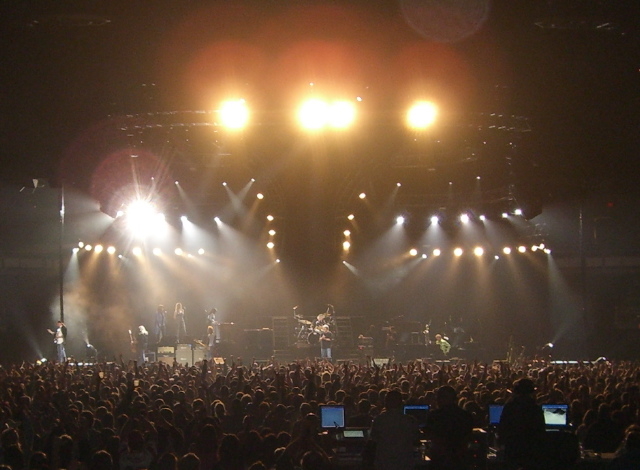
Alright, Detroit!! You feel funky tonight? I feel funky tonight: Bob Seger, "Trying to Live My Life Without You."
Recent Posts
Archives
- December, 2017
- December, 2015
- January, 2015
- November, 2014
- April, 2014
- March, 2014
- December, 2013
- September, 2013
- July, 2013
- March, 2013
- January, 2013
- November, 2012
- October, 2012
- July, 2012
- May, 2012
- March, 2012
- February, 2012
- December, 2011
- November, 2011
- October, 2011
- September, 2011
- August, 2011
- July, 2011
- June, 2011
- May, 2011
- April, 2011
- March, 2011
- February, 2011
- January, 2011
- December, 2010
- ,
Categories
Links
- My Essay on Bloom: No Other Way Out
- Playlist in LargeHearted Boy
- A Book Brahmin Essay for Shelf Awareness
- Powell's Blog: Sex & Money
- Powell's Blog: Riding Freights
- Powell's Blog: Burning Down the House
- Powell's Blog: Bob Seger
- Powell's Blog: Thank You
- An Interview with Kathleen Alcala
- An interview with Laura Stanfill
- Video with Yuvi Zalkow
- Interview with Noah Dundas
- Tin House Blog: Motor City Fiction
- Blog on Occupy Writers
- W2W Essay for Northwest Book Lovers
- W2W Essay for Poets & Writers
- America Reads: Page 69
- America Reads: My book, the movie
- America Reads: What I'm Reading
- Interview with Be Portland
- The Oregonian: Where I Write
.jpg)
 Subscribe to the RSS feed
Subscribe to the RSS feed